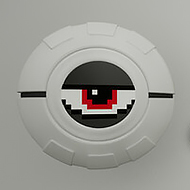Click To Continue

Click To Continue transforms a simple concept into a deep interactive experience built entirely on timing, logic, and perception. What begins as a sequence of buttons and signals quickly evolves into a mind test that measures your awareness, patience, and reaction time. Every click feels like a small decision with big consequences, as the pace shifts unpredictably and the patterns change before you can adjust. The more you play, the more you realize that this isn’t a game about speed—it’s about rhythm, focus, and adaptability.
Understanding the Core Mechanics
At its heart, Click To Continue relies on a sequence system where each click triggers a new layer of challenge. Some tasks ask for precision, others demand observation, and all of them require a calm mindset. You’ll notice early that rushing leads to failure, while staying deliberate creates progress. Every round is slightly different, forcing players to rely on memory and intuition rather than routine.
- Timing control: Each stage features moments that require perfect timing to proceed safely.
- Pattern recognition: Visual and sound cues indicate the right time to act.
- Reaction variation: Some prompts appear instantly, while others test your ability to wait.
The simplicity of its interface hides complex mental coordination underneath. The rules are easy to grasp, yet the execution keeps players constantly engaged and focused on precision.
Levels and Gameplay Variations
Each new section of Click To Continue expands on the previous one by introducing modifiers that affect your performance. Some rounds change speed randomly, others reverse controls or distort visual cues. These twists encourage adaptability and break repetition. As players improve, they begin recognizing rhythm patterns and anticipating transitions before they happen.
- Adaptive pacing: Levels speed up or slow down depending on your accuracy.
- Deceptive visuals: False cues and misleading colors appear to test observation skills.
- Progressive memory tasks: Later stages mix button sequences with memory-based challenges.
There are also optional challenge modes where a single mistake resets your progress. These modes appeal to experienced players looking for maximum concentration tests and encourage replaying earlier sections to refine technique.
Tips and Strategies for Success
Mastering Click To Continue is not about mechanical speed—it’s about discipline. The following approaches consistently help players extend their streaks and complete longer sessions:
- Stay calm: Emotional reactions to mistakes lead to more errors; composure keeps timing consistent.
- Learn pacing: Some cues appear slower to trick impatient players into misclicking.
- Use rhythm: Counting beats between signals can build internal timing awareness.
- Observe patterns: Visual repetition often indicates safe timing windows for the next move.
With enough experience, Click To Continue becomes less of a reaction test and more of a rhythm training exercise. You start predicting the game’s rhythm naturally, relying on instinct and focus rather than pure reflex.
Why Players Keep Coming Back
Despite its minimalist setup, Click To Continue builds engagement through its hypnotic flow. The tension of not knowing what’s next keeps the experience fresh, while each round provides measurable feedback on improvement. Players who enjoy rhythm-based or precision-oriented titles often find this one particularly addictive, as it rewards small improvements over time rather than quick wins.
Click To Continue isn’t about flashy visuals or complex storylines—it’s a mental challenge that measures control, attention, and adaptability in real-time. It turns something as simple as a click into a precise art form. Every action carries weight, every second tests your awareness, and the satisfaction of perfect timing makes every completed sequence feel earned and worthwhile.




























